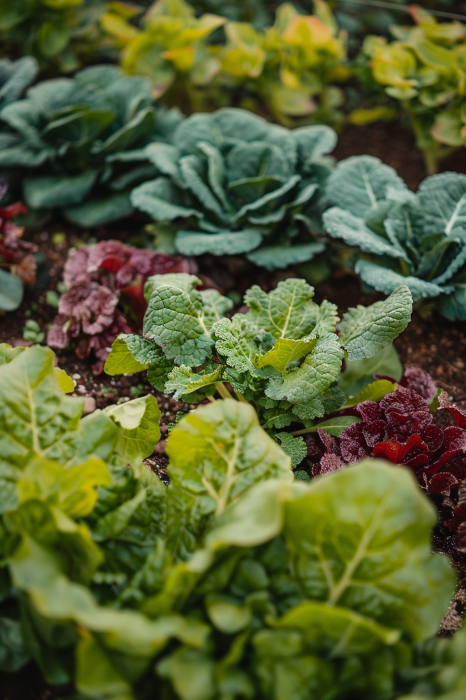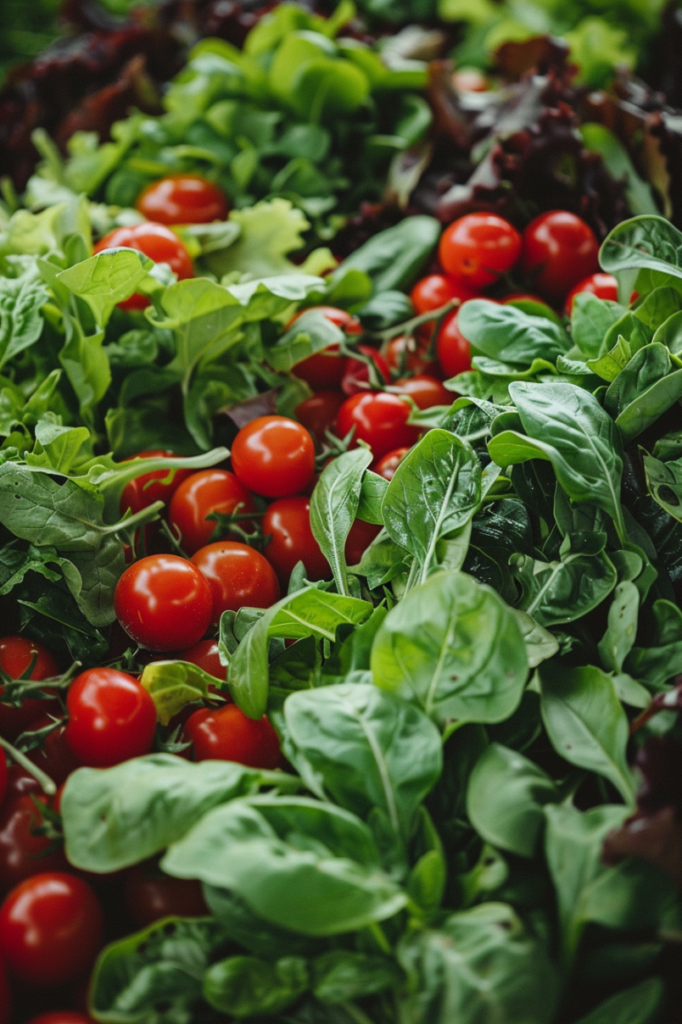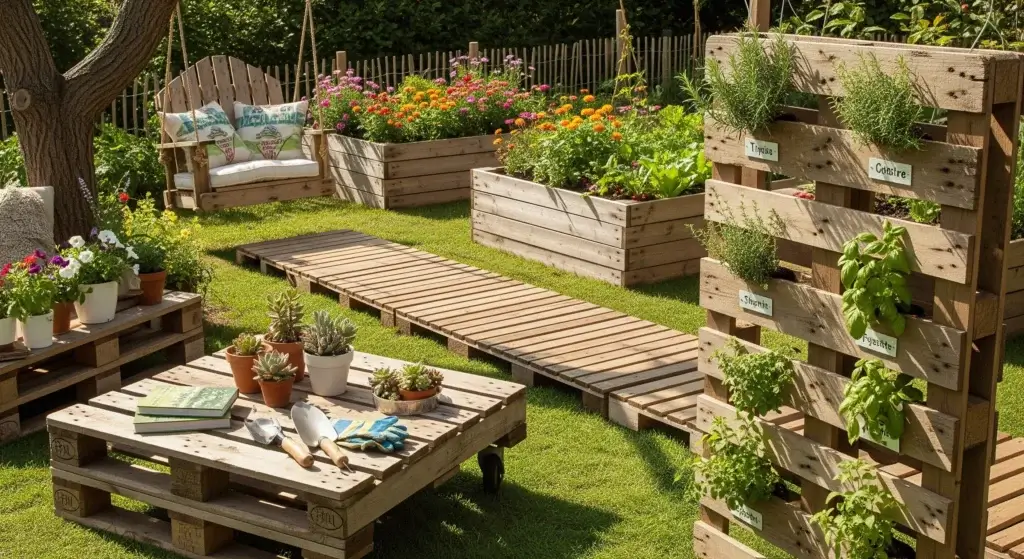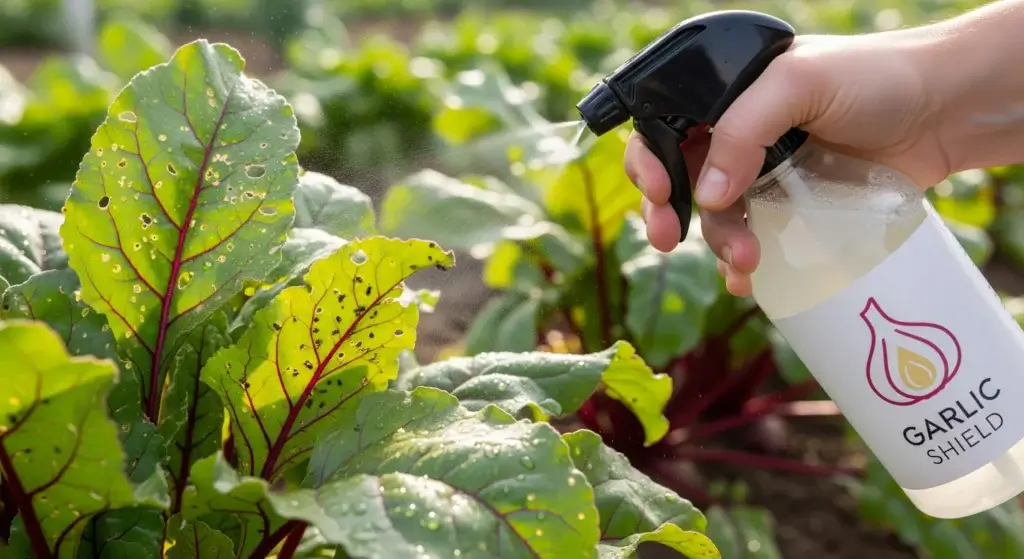
Growing your own salad bowl garden is a simple and rewarding way to enjoy fresh, nutritious greens all year round.
With a few basic materials and some easy-to-follow steps, you can create a thriving garden in your own backyard or even indoors.
In this article, we’ll explore the benefits of a salad bowl garden, the essential materials needed, and provide a step-by-step guide to get you started.
Benefits of a Salad Bowl Garden
Cultivating your own salad bowl garden offers a multitude of perks, making it a delightful and practical choice for anyone who relishes fresh greens.
Here’s why it’s worth considering:
Freshness and flavor
There’s something truly special about harvesting your own salad greens at their peak freshness.
Unlike store-bought greens, which may have traveled long distances and been stored for days, homegrown greens are bursting with flavor and nutrients.
By skipping the preservatives and artificial additives, you can savor the true essence of fresh produce straight from your garden.
- Read also: Grow Anywhere: DIY Container Ideas For Vegetables
- Read also: Tiny Garden, Big Harvest: DIY Vegetable Garden For Small Spaces
Cost-effectiveness
While there’s an initial investment in seeds, soil, and containers, the long-term savings of growing your own greens are substantial.
By bypassing the expenses associated with store-bought produce—like transportation, packaging, and markups—you can enjoy significant cost savings over time.
Plus, there’s the added satisfaction of knowing exactly where your food comes from and how it’s been grown.
Year-round harvest
Whether you have outdoor space or a cozy corner indoors, a salad bowl garden can thrive year-round.
Indoor setups are particularly versatile, fitting snugly on windowsills, balconies, or countertops.
This means you can enjoy a steady supply of fresh greens regardless of the season or weather conditions, adding a touch of greenery and vitality to your home throughout the year.
Customization
With your own salad bowl garden, you’re the master of your green domain.
You get to handpick the varieties of greens that best suit your taste buds and nutritional preferences.
From classic lettuce varieties to more adventurous options like kale, arugula, and spinach, the possibilities are endless.
Experiment with different combinations and flavors to create mouthwatering salads that cater perfectly to your individual palate.

Essential Materials Needed
Embarking on your salad bowl gardening adventure requires a few essential items to ensure your plants thrive.
Let’s delve into these key materials in detail:
Salad bowl or container
Choosing the perfect container is vital for your salad bowl garden.
Look for a container that’s deep enough, ideally 6-8 inches, to accommodate your salad greens’ root systems.
Ensure it has proper drainage holes to prevent waterlogging, which can harm your plants.
Get creative with your container choice, whether it’s a classic pot or a repurposed item like an old bucket or wooden crate.
Soil
The quality of your soil is critical for the success of your salad bowl garden.
Opt for a high-quality potting soil specifically designed for container gardening.
Seek out soil blends that are well-draining and packed with nutrients to give your greens the best possible start.
Seeds
Choosing the right seeds is key to a thriving salad bowl garden.
Select a variety of salad green seeds suited to your climate and growing conditions.
Consider factors like sunlight, temperature, and moisture levels when picking your seeds.
Popular choices include lettuce, spinach, arugula, kale, and herbs like basil and parsley.
Watering can or hose
Regular watering is essential to keep your salad bowl garden happy and healthy.
Equip yourself with a watering can or hose to ensure your greens receive the right amount of water, especially during warmer weather.
Fertilizer
Nourishing your salad greens with the right fertilizer promotes robust growth and tasty harvests.
Consider using an organic fertilizer specifically formulated for vegetables and greens.
Organic options provide essential nutrients without harsh chemicals, supporting healthy plant development.

Step-by-Step Guide
Creating your own salad bowl garden is a rewarding and straightforward process.
Follow these simple steps to get started:
Prepare the soil
Begin by filling your salad bowl or chosen container with high-quality potting soil.
Leave about an inch of space at the top to accommodate watering.
Ensure the soil is loose and well-draining to promote healthy root growth and prevent waterlogging.
Sow the seeds
Next, sow your salad green seeds directly into the soil.
Plant the seeds approximately 1/8 inch deep and space them 1-2 inches apart to allow room for growth.
Gently cover the seeds with a thin layer of soil, patting it down lightly to ensure good soil-to-seed contact.
Water and provide light
After sowing the seeds, give the soil a gentle but thorough watering to ensure it’s evenly moist.
Place your salad bowl garden in a location that receives ample sunlight, ideally 4-6 hours of direct sunlight per day.
If growing indoors, consider placing your garden near a sunny window or under grow lights to provide sufficient light for plant growth.
Maintain the garden
To keep your salad bowl garden thriving, maintain a consistent watering schedule.
Water the soil regularly, ensuring it stays moist but not waterlogged. Allow the top inch of soil to dry out between waterings to prevent root rot and other issues.
Additionally, consider feeding your plants with a balanced organic fertilizer every few weeks during the growing season to provide essential nutrients for healthy growth.

Caring for Your Salad Bowl Garden
Maintaining your salad bowl garden requires attention to key aspects like light, watering, feeding, and harvesting.
Here’s how to care for your garden to ensure a bountiful harvest:
Light
Most salad greens thrive in direct sunlight, so aim to provide your garden with at least 4-6 hours of sunlight daily.
Place your garden in a sunny spot, whether indoors near a window or outdoors in a sunny area of your yard or balcony.
Watering
Keep your salad bowl garden well-watered, ensuring the soil remains consistently moist but not waterlogged.
Water your plants regularly, allowing the top inch of soil to dry out between waterings.
This helps prevent issues like root rot while ensuring your greens stay hydrated and healthy.
Feeding
Boost the health and productivity of your salad greens by feeding them with a balanced organic fertilizer every few weeks during the growing season.
Follow the instructions on the fertilizer package for proper application, ensuring your plants receive the necessary nutrients for robust growth and delicious flavor.
Harvesting
Enjoy a continuous supply of fresh greens by harvesting the outer leaves once your plants reach a few inches tall.
This encourages new growth and ensures your plants continue to produce throughout the season. Be gentle when harvesting to avoid damaging the plant, allowing it to thrive and regrow for future harvests.

Tips and Tricks for Success
Enhance the success of your salad bowl garden with these additional tips and tricks:
Companion planting
Consider planting companion herbs like basil or chives alongside your salad greens.
Not only do these herbs add flavor to your salads, but they also help deter pests naturally, reducing the need for chemical pesticides.
Succession planting
Ensure a steady supply of fresh greens by practicing succession planting.
Sow seeds every few weeks to stagger the growth of your plants, ensuring you have a continuous harvest throughout the season rather than a single large crop all at once.
Deadheading
To encourage new growth and prolong the harvest season, regularly remove spent flowers from your salad greens.
Deadheading prevents the plants from focusing energy on seed production and encourages them to produce more leaves for you to enjoy.
Winter protection
If you live in a cold climate, take steps to protect your salad bowl garden from frost and cold temperatures.
Consider bringing your garden indoors during cold snaps or covering it with frost cloth to provide insulation and protection from freezing temperatures.

- Read also: DIY Vegetable Garden Box: Build Your Own Veggie Oasis
- Read also: The Beginner’s Guide: Build DIY Hydroponic Vegetable Garden
Conclusion
Growing your own salad bowl garden is a simple and rewarding way to enjoy fresh, nutritious greens all year round.
With the right materials and a little care, you can create a thriving garden that provides you with a steady supply of fresh greens.
Remember to provide your salad bowl garden with the right amount of light, water, and fertilizer, and don’t hesitate to experiment with different varieties and companion planting techniques to keep your garden thriving.
FAQs
Lettuce, kale, arugula, spinach, and chard are all popular options.
Water regularly, keeping the soil moist but not soggy. Allow the top inch of soil to dry between waterings.
Consider companion planting with herbs like basil or chives to deter pests naturally.
Yes, you can grow a salad bowl garden indoors using a container and a sunny windowsill.



